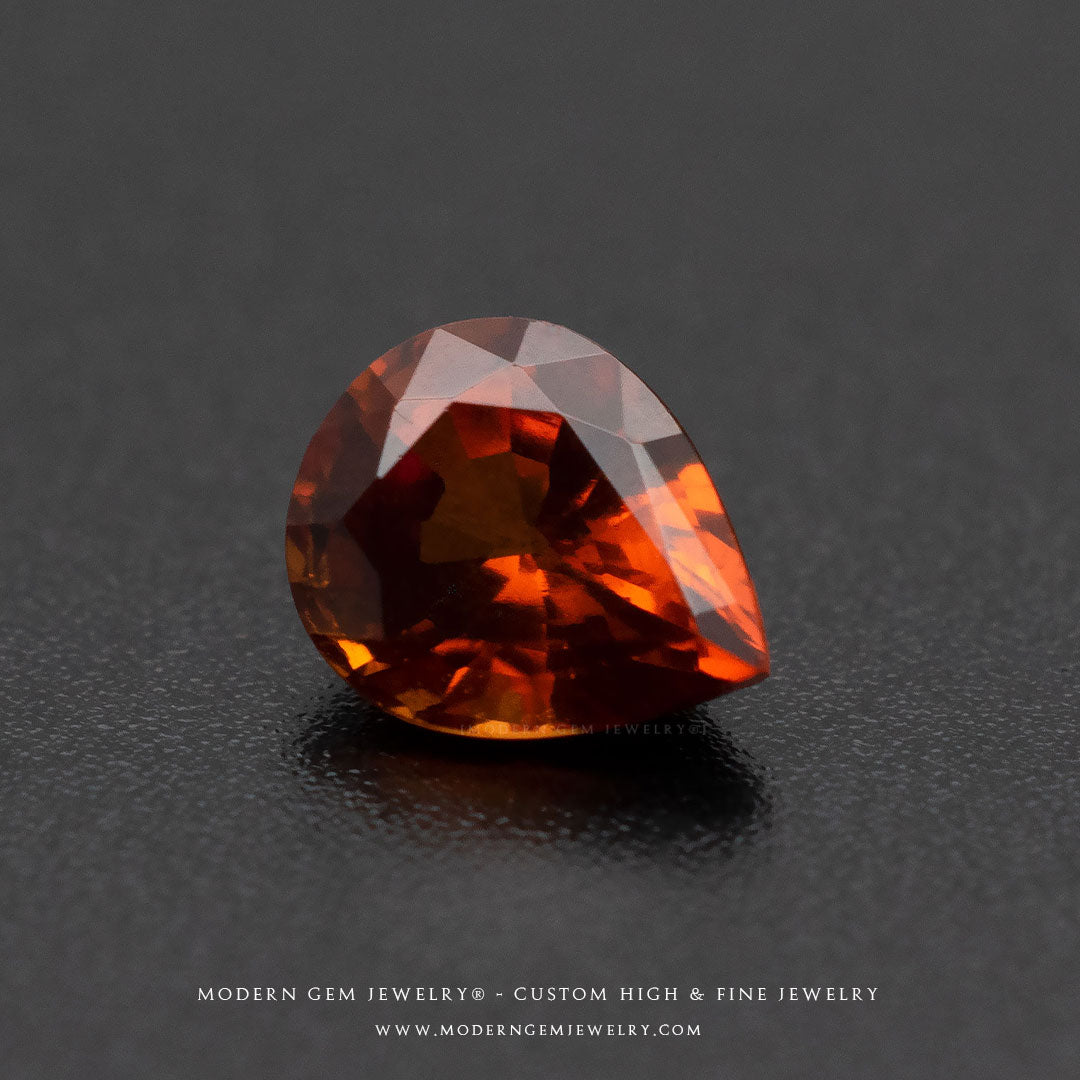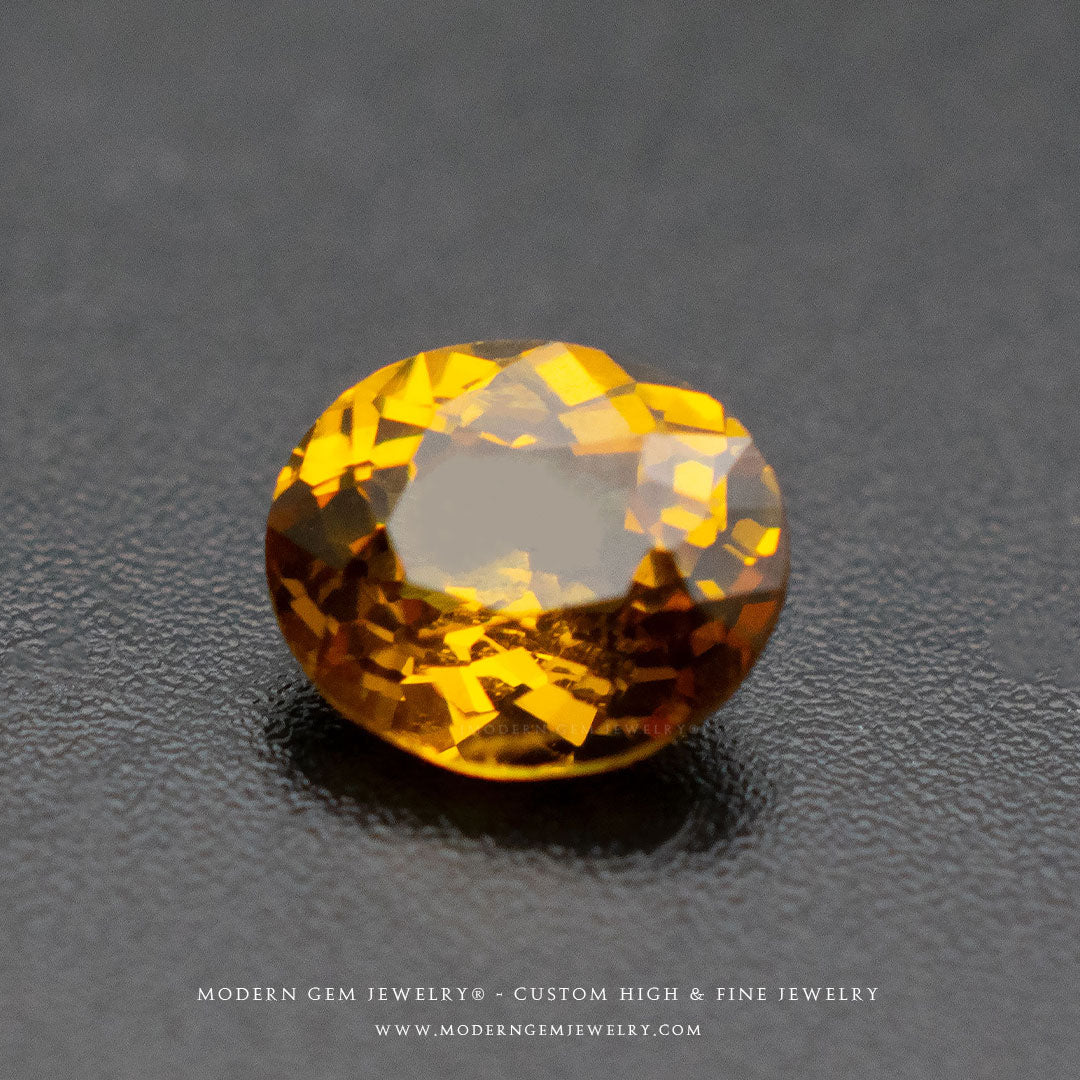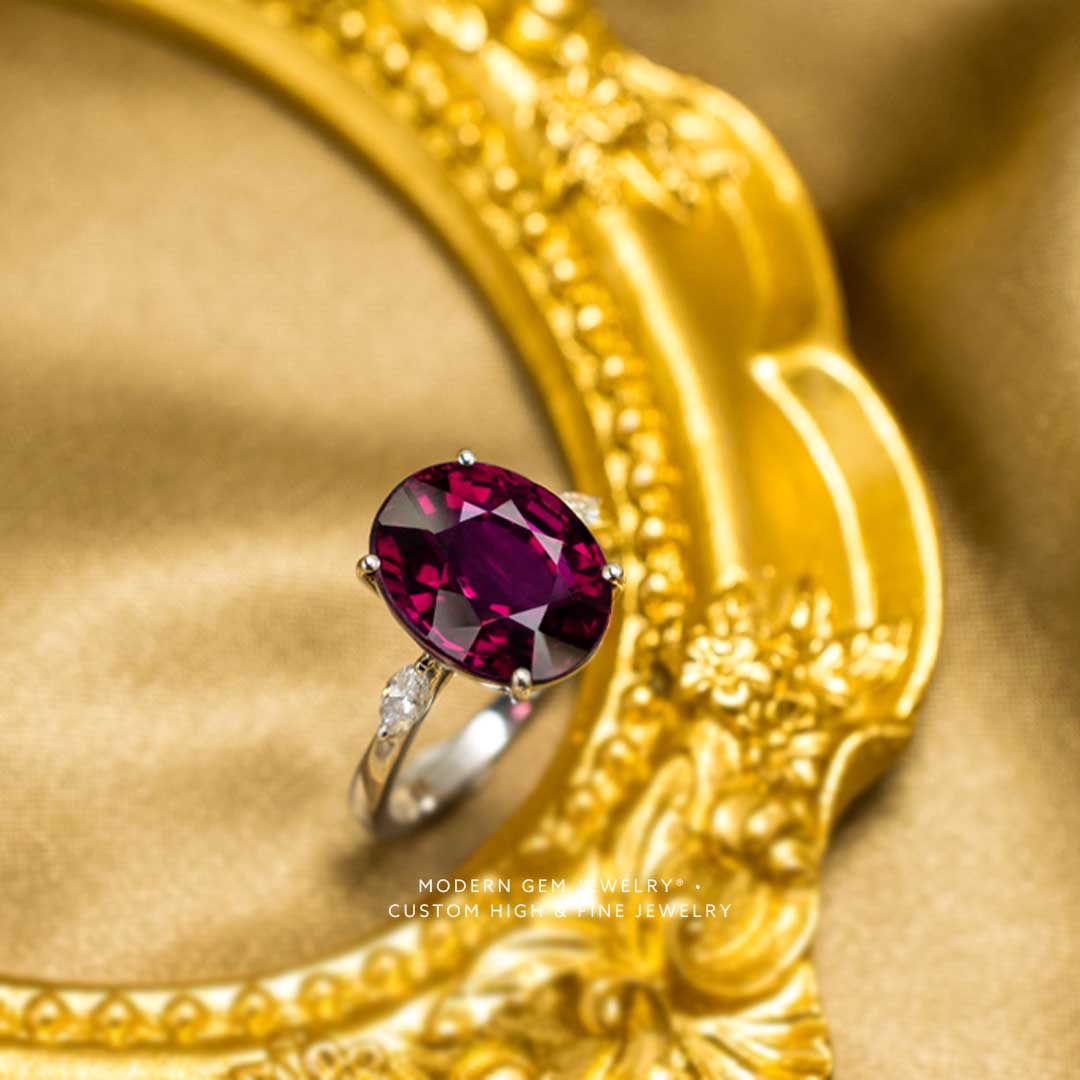Garnet, the January birthstone, is commonly associated with a deep red hue, but this versatile gemstone is available in a rainbow of colors. The color variation is caused by trace elements, and each variety has a specific name: pyrope and almandine (ranging from purple to orangy red), spessartine (oranges and yellows), grossularite (ranging from colorless to yellow, reddish-orange, and vibrant green), and andradite (yellow and yellowish green). In addition to these colors, there are additional combinations of them, resulting in an even greater variety of colors from which to pick.
1. Hardness and Geography
Garnet is a fairly hard gemstone, scoring between 6.5 and 7.5 on the Mohs scale, and it frequently possesses remarkable clarity and transparency. Inclusions, also known as internal flaws, are generally regarded as undesirable in a gemstone; however, the distinctive "horsetail" inclusion that can be seen in demantoid garnet is highly coveted.
There are various places on Earth where garnet and its many variants can be discovered, including a number of states in the United States, most notably Wyoming, as well as the Czech Republic, Greece, Russia, Tanzania, Madagascar, Sri Lanka, Mali, and India. Garnet is also found in Madagascar.
2. Garnet Lore
As is the case with other precious stones, garnet is said to have a variety of positive effects on one's health, including the ability to alleviate symptoms associated with liver conditions, inflammatory disorders, and heart conditions.
Garnet, which is known as the "gem of faith," "gem of friendship," "gem of peace," and "gem of goodwill," makes an excellent present for a special friend or loved one, as well as for oneself as a present.
This vibrant gemstone is ideal for kicking off the new year with a feeling of peace, happiness, and purpose, regardless of the reason you wear garnet or the way you choose to wear it.
3. Clarity
The type of gemstone determines its clarity. Its red variant of garnets is usually eye-clean, with no apparent inclusions. Nevertheless, an almandine garnet (a variety of red garnet) may include asbestos fiber inclusions, giving it a star-like appearance and making it valuable due to its scarcity. Moreover, some orange types, such as Spessartite, frequently include visible inclusions.
4. Cut
Garnets are pretty tough and are cut into practically any shape. The most common red garnets are cut into typical ovals, pillows, trillions, and emerald cuts.
The more precious garnets, such as Tsavorite, are cut into forms to maximize carat weight and reduce wastage of the rough.
5. Carat
Garnets come in a variety of sizes and shapes. However, finding a tsavorite and demantoid in larger dimensions is exceptionally uncommon, resulting in a massive surge in their value. Other garnet variants, such as almandine, are not as pricey because they are usually available in bigger sizes.
6. How to Take Care of Your Garnet
-
When participating in sports, strenuous outdoor activities, or even household chores, always take off your garnet jewelry.
-
Avoid sharp strikes on your Garnet Jewelry
-
Rough wearing is not encouraged
-
Avoid strong chemicals such as home cleaners, makeup cleaners, and hairsprays.
-
To reduce scratches and friction, put your garnet jewelry away from other gemstones.
-
It is highly recommended to avoid exposing natural garnets to extreme temperatures




